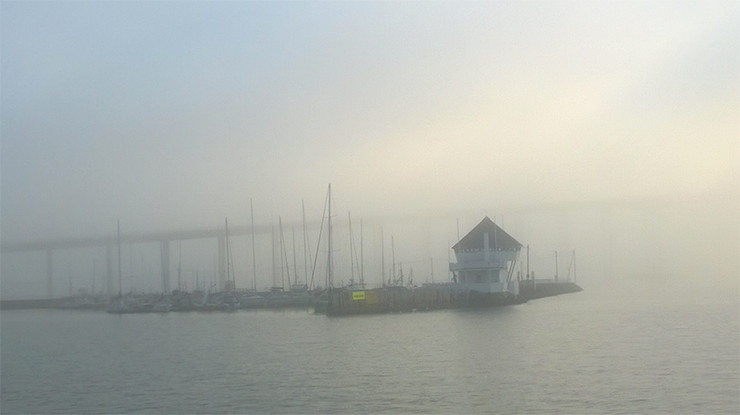What is the Arctic? Research Professor Monica Tennberg discusses the question through heterotopia, a concept that helps to understand the contradictions characterizing the Arctic.

What is the Arctic? How to define the Arctic? Where is the Arctic? There have been numerous efforts to define what the Arctic is, for example, as a home for indigenous peoples, a laboratory for science and a warning bell for warming climate. And, the question where it is has also produced different boundaries for the Arctic, for example as a region bounded by certain physical characteristics or by political and legal considerations. Here, there is yet another try to figure out what the Arctic is all about which has been inspired by Michel Foucault’s idea of heterotopia (1967). This concept help us to understand the difficulty to define what the Arctic and where a number of contradictions that characterize the region.
Heterotopias are places between utopias, and dystopias. Heterotopias are real, concrete places like Salla, a town with declining population, livelihoods and employment in Eastern Lapland near the Russian border, but in the midst of plans for rail road connections to the Arctic Ocean, plans for mines and hopes for tourism-based development. Heterotopias are places in contrast to utopian ideas, for example, of the Arctic as the cornucopia of wealth and riches and also, in contrast to dystopias, like the warming climate with melting sea ice, starving polar bears, and local communities in trouble. Heterotopia as a term refers to “hetero”, that is, difference and to “topos”, a logic of space. The idea of heterotopias highlights the importance of relations, for example, between humans and the environment, economy and politics, inside and outside the region, the local and the global. Even in the Arctic, “… we do not live in a kind of void, inside of which we could place individuals and things. We do not live inside a void that could be colored with diverse shades of light, we live inside a set of relations that delineates sites which are irreducible to one another and absolutely not superimposable on one another.” The Arctic, from this perspective, is a multiplicity of relations and related contradictions.
A particular place in a global economic space
Whereas the world is increasingly aware of diminishing and degrading natural resources, and dangers of overconsuming them, the Arctic promises untapped, globally significant natural resources and economic development and growth for the region and beyond. From the heterotopian perspective, the region is a place of “deviation”, underdeveloped, which requires and legitimizes the attention towards the region and its resources. The region “needs” to be developed, that is, resources explored, exploited and developed, and global need for resources need to be secured with ships, containers and pipelines. The contradiction here is that the region and its development is isolated from its consequences contributing to irrational use of natural resources, climate change and its numerous consequences. Global concerns over climate change, mitigation of emissions and needs of adaptation to warming climate rarely are connected with the energy and mineral resources based discourses of the Arctic economic development.
A place with multiple temporalities
From a heterotopian perspective, the Arctic is “juxtaposing in a single real place several spaces, several sites that are in themselves incompatible.“ The Arctic is at the same time traditional and modern; local, global and glocal; rural and urban; industrial and non-industrial. As Foucault suggests, ”we are in the epoch of simultaneity: we are in the epoch of juxtaposition, the epoch of the near and far, of the side-by-side, of the dispersed. We are at a moment, I believe, when our experience of the world is less that of a long life developing through time than that of a network that connects points and intersects with its own skein.” In those spatialities, different temporalities reside; the past, the present and the future, and their various mixes. The Arctic is a region of accumulated time, as history in the ice of the glaciers that has been stored there for centuries, but now, as melting of the ice speeds, the time flows in front of our eyes. The pictures of melting glaciers and travelling icebergs give us an glimpse to the future.
Arctic openings and closings
Who knows the Arctic? Who knows what is best for the Arctic? The Arctic has been and continues to be dominated by the debates between different knowledge producers, holders and user around these questions. The debates reflect power relations and concern intellectual property rights, and concrete issues of employment and income. New knowledge, ways of knowing and innovations are increasingly seen as an economically significant requirement in the global knowledge-based economy. For example, Arctic expertise refers to region-specific knowledge and skills that can be translated into new innovations, products and services. With claims of knowledge and expertise, some doors are opened and some closed for different actors and organizations to participate in the discussion about the region and its future. “Heterotopias always presuppose a system of opening and closing that both isolates them and makes them penetrable.” These openings and closings affect the way knowledge flows and travels between knowledge holders, producers and users and holders.
No wonder it is difficult to make sense of the Arctic or explain what or where it is easily. Too often, the diverse and contradictory nature of the Arctic is dismissed and simplified understandings of the complexities of the region dominate the approach to the region.
Text and photo: Monica Tennberg
Quotes
Michel Foucault (1967/1984). Of other times: Utopias and heterotopias. From Architecture /Mouvement/ Continuité, October 1984; (“Des Espace Autres,” March 1967. Translated from the French by Jay Miskowiec). Available at: http://web.mit.edu/allanmc/www/foucault1.pdf.